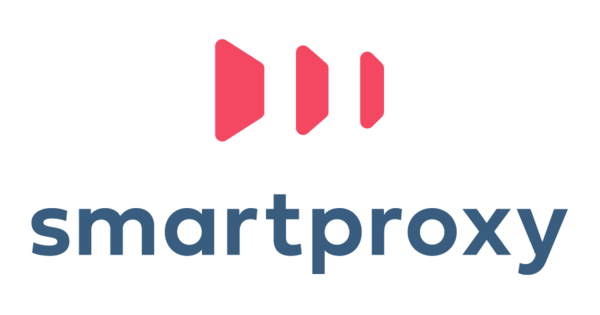A headless browser is a web browser without a graphical user interface (GUI). Instead, it operates programmatically, enabling automated control and interaction with web pages through code. Headless browsers are usually used in web development, testing, and scraping. In this article, we will discover the benefits of using headless browsers, the advantages and disadvantages, and the most popular headless browsers right now.
Best Residential Proxy Providers for Headless Browsers
The Benefits of Using Headless Browsers
Headless browsers bring different benefits to the devs table, such as:
- Speed: They load web pages faster because they don’t spend time rendering visual elements, resulting in quicker data extraction or testing.
- Flexibility: They can run on various environments, including servers, virtual machines, and containers, without the need for a display, making them highly adaptable for different use cases.
- Automation: They enable automation of web-related tasks like testing, scraping, and monitoring, streamlining processes and reducing manual labor.
- Accuracy: Headless browsers can handle complex web structures, execute JavaScript, and load dynamic content, ensuring more precise and comprehensive data extraction or testing results.
- Multi-platform support: Many headless browsers support multiple platforms, such as Windows, macOS, and Linux, providing a consistent experience across different systems.
- Scalability: They can be easily scaled to accommodate large-scale web scraping or testing operations, making them suitable for projects of various sizes. Remember that if you are working on a large-scale project, you should consider using residential proxy services.
- Resource-efficient browsing: Since they don’t load visual elements, headless browsers consume fewer system resources, making them an excellent choice for resource-constrained environments, especially when you are paying for proxies based on the bandwidth you are consuming.
- Integration: Headless browsers can be easily integrated with popular programming languages, frameworks, and libraries, simplifying the development process.
- Extensions: Many headless browsers offer support for plugins and extensions, allowing users to customize and enhance their functionality to better suit specific needs.
- Continuous integration and deployment: They can be integrated with continuous integration (CI) and continuous deployment (CD) pipelines, enabling automated testing and monitoring throughout the development lifecycle.
Headless Browsers for Web Scraping
Headless browsers might not be strictly necessary for web scraping, but they certainly make the process easier and more reliable. They can handle complex web pages, execute JavaScript, and load dynamic content that a simple request-based scraper might miss. They can also imitate real user interactions, such as clicking buttons or filling out forms, allowing them to access data behind login screens (which is not recommended and can be against the T&C of the website) or other interactive elements.
In conclusion, while headless browsers are not strictly needed for web scraping, they do offer significant advantages that make them a popular choice for many web scraping services. By understanding their benefits and limitations, you can decide if using a headless browser is the right approach for your specific project.
The Two Main Uses of Headless Browsers
Headless browsers have a range of applications in today’s web-driven world. Below, we discuss two of the most common use cases, the challenges you may encounter with each use case, and useful recommendations for the effective use of headless browsers in these cases.
Web Scraping
As we already discussed, headless browsers can be used to help you automate web scraping tasks.
- Benefits: Headless browsers excel at extracting data from websites, as they can load dynamic content, handle JavaScript, and navigate complex web structures. This results in accurate and comprehensive data extraction.
- Challenges: Web scraping with headless browsers may involve ethical concerns, such as breaching a website’s terms of service or consuming excessive server resources. From our experience though, most websites don’t have a problem with headless browsers.
- Recommendations: To mitigate these challenges, use headless browsers responsibly by respecting website policies, managing resource consumption, and considering alternative methods when appropriate.
Web Testing
Web testing is probably the most common use case of headless browsers.
- Benefits: Headless browsers are used for automated testing of web applications, streamlining the identification and resolution of issues to ensure the best performance and user experience.
- Challenges: Since headless browsers do not render visual elements (no GUI, remember?), they may not fully replicate real-world user experiences during testing.
- Recommendations: To address this challenge, combine headless browser testing with other testing methods, such as manual and visual testing, to ensure comprehensive coverage of all aspects of the web application.
Now, it’s time to see what are the best and most popular headless browsers you can start using today.
Most Popular Headless Browsers for Web Scraping
First of all, we want to show you a chart that shows how popular Selenium is compared to the other major headless browsers. Please note that this chat represents the popularity worldwide.
Selenium
Selenium is a versatile browser automation tool that supports multiple programming languages, including Java, C#, and Python, as well as various browsers like Chrome, Firefox, and Safari. Its versatility and extensive community support make it a go-to choice for many developers. Selenium provides a wide array of features, including handling multiple browser windows, managing cookies, and interacting with web elements, making it suitable for web scraping and testing.
Right now, it’s the most popular choice for browser automation.
Playwright
Playwright is a powerful Node.js library that automates browser actions across multiple web browsers, including Chromium, Firefox, and WebKit. It is popular for its ease of use, excellent documentation, and a range of features such as network interception, automated screenshots, and multiple browser contexts. Playwright also supports various languages, including Python, Java, and C# through its community-maintained clients.
Puppeteer
Puppeteer is a popular Node.js library that offers a high-level API for controlling Chromium-based browsers. Its powerful features include generating screenshots, creating PDFs, and crawling Single Page Applications (SPAs). Puppeteer is known for its ease of use and seamless integration with modern JavaScript tools and libraries, making it an excellent choice for web scraping and testing tasks.
Chromium
Chromium is the open-source browser behind Google Chrome, and it can run in headless mode. It offers developers extensive features and capabilities, such as network monitoring, emulation of devices, and handling of multiple browser sessions. Chromium’s compatibility with various web technologies and its ability to execute JavaScript on the fly makes it a popular choice for web scraping and testing.
HtmlUnit
HtmlUnit is a Java-based headless browser that simulates a web browser’s behavior for web application testing and web scraping. It is known for its excellent performance, compatibility with JavaScript, and support for AJAX technologies. HtmlUnit also provides an API for interacting with web elements and supports various authentication mechanisms, making it a comprehensive solution for data extraction and testing tasks.
PhantomJS
PhantomJS is a scriptable headless browser based on the WebKit engine. Despite its development being discontinued, it is still used by some developers due to its lightweight nature, simple API, and compatibility with various web technologies. PhantomJS is suitable for web scraping and testing, especially for simpler tasks or in situations where other headless browsers are not viable.
Splash
Splash is a lightweight, scriptable headless browser with an HTTP API, specifically designed for web scraping and rendering JavaScript-heavy web pages. It offers features like handling cookies, customizing headers, and taking screenshots. Splash can be easily integrated with web scraping frameworks like Scrapy and is suitable for extracting data from dynamic websites.
SlimerJS
SlimerJS is a scriptable headless browser based on the Gecko engine used in Mozilla Firefox. It provides similar functionality to PhantomJS, but with support for a more modern rendering engine. SlimerJS can handle dynamic content, execute JavaScript, and interact with web elements, making it a viable option for web scraping and testing tasks.
Conclusion
In conclusion, headless browsers are invaluable tools in web scraping and testing, offering numerous advantages that streamline the process. By understanding their use cases, challenges, and various options, you can make an informed decision on which headless browser is best suited for your specific needs. Remember to use them responsibly and ethically to ensure a positive impact on the web development community.
With that being said, there are many different web scraping services that let you use their own headless browsers, keeping everything in the same place. If you are interested in one of those advanced premium browsers, we recommend giving a try to Bright Data’s new product, Scraping Browser.
Frequently Asked Questions
A headless browser is a web browser similar to the ones we all know and use, just without the graphic interface. You interact with it through code only.
Headless browsers can handle all kinds of content, including dynamic, and can navigate through difficult web structures. Since you don’t have to wait for graphic elements to load, the scraping process is often faster too.
There is no correct answer here, it mostly depends on the needs of your project.
In most cases, the answer is yes. Please go over the terms and conditions of the target website. Avoid scraping behind a login and you should be safe.
Sure! Those browsers help you automate the browsing process and let you interact with web elements like any other browser.

Daniel is an SEM Specialist with many years of experience and he has a lot of experience with proxies and web data collection.




